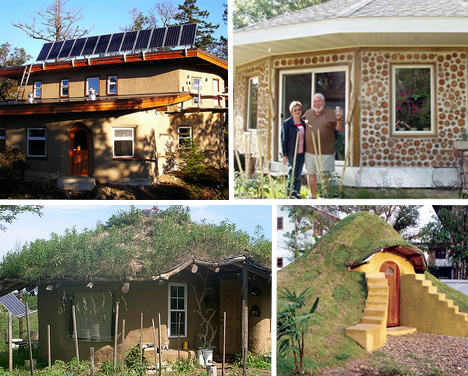
Wouldn’t it be nice to own your own green dream home, made with recycled and natural materials and packed with custom features? Whether you’re an experienced builder or have never picked up a power tool in your life, you can build a natural eco-friendly home with user-friendly, low-cost materials like cob, cordwood, straw and the dirt and wood from your own land. These 7 natural building techniques produce beautiful homes with a small ecological footprint and tons of personality.
Earthships and Hobbit Houses
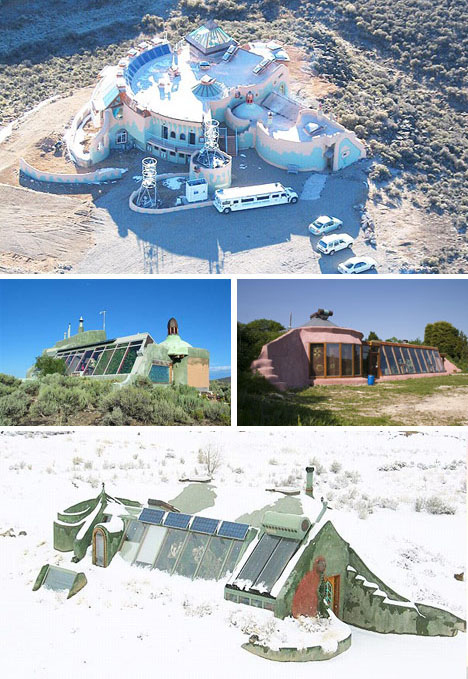
(images via dominicspics, ECOnscious, Earthship Biotecture)
[youtube=L9jdIm7grCY]
They seem to be a living part of the very earth itself, often with nothing but a façade and some windows to betray the presence of a home in the hillside. And earth-sheltered homes built partially into the ground come with some incredible benefits, like the ability to absorb and regulate heat from the sun for comfort in all seasons. Earth-sheltered homes can be built entirely underground, bermed (covered with earth on one to three sides) or built into a larger hill with just one side open. Earthships and ‘hobbit houses’ are common forms of earth-sheltered homes.
Earthships are among the most popular types of DIY eco homes around the world, utilizing discarded “junk” like stacks of earth-packed tires, bottles and cans to build custom homes in practically any shape imaginable. While most beginners in this building technique stick to simple designs that are cheap and easier to build, some models are stunningly complex.
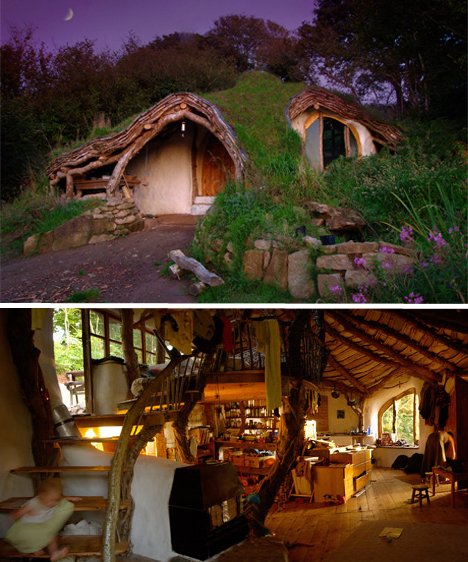
(images via: simondale.net)
Among the most famous examples of a ‘hobbit house’ is “A Low Impact Woodland Home”, self-built in Wales for about 1000-1500 man-hours (over four months) and £3000. Creator Simon Dale used stone and wood from the property, straw bales covered in plaster for the walls, and lots of reclaimed and salvaged materials like hardwood flooring, doors and windows. The reciprocal roof, covered in plastic sheeting and mud/turf, is surprisingly easy to build and looks incredible.
Cob
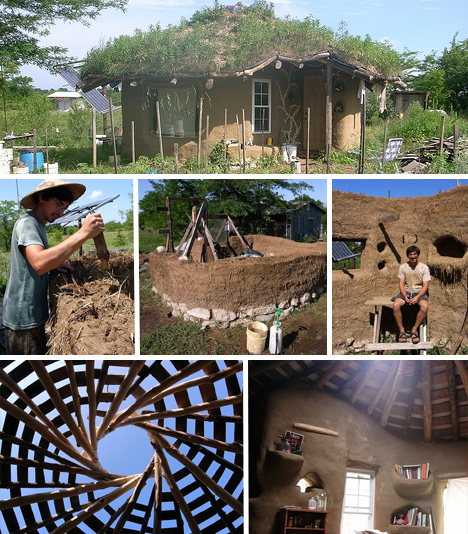
(images via: ziggy fresh)
[youtube=F0KDp00n4fs]
How can a house made of mud last 500 years? The short answer is, the combination of clay, sand and straw – known as cob – is extremely strong and durable once it dries, and can withstand fire and severe weather as well as practically any other material. This ancient building technique is among the easiest and least expensive ways to build your own sustainable, healthy green home.
Just ask “Ziggy”, a resident of the Dancing Rabbit Ecovillage in Missouri who built his own cob cottage for just $3,000. Ziggy breaks down the costs, all materials used, time frame and the entire process including lots of photos at his website, “The Year of Mud”.
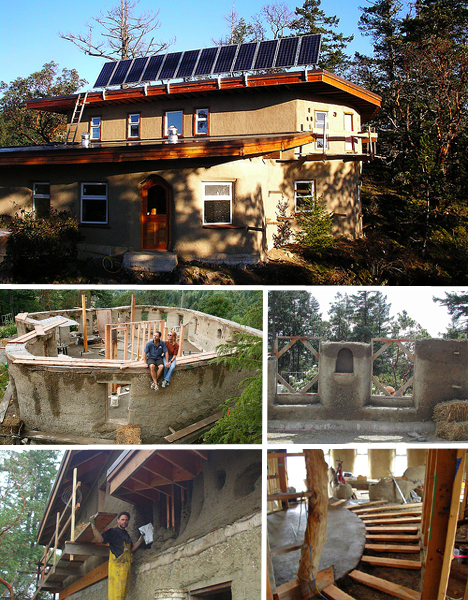
(images via: eco-sense)
These hand-sculpted homes give the builder practically endless creative opportunities for organic forms, built-ins like bookcases and benches, and even artistic details. But cob houses don’t all have to be free-flowing and eccentric. Take a gander at the Eco Sense house, located in Canada, which wouldn’t look out of place in a suburban neighborhood.
Cordwood
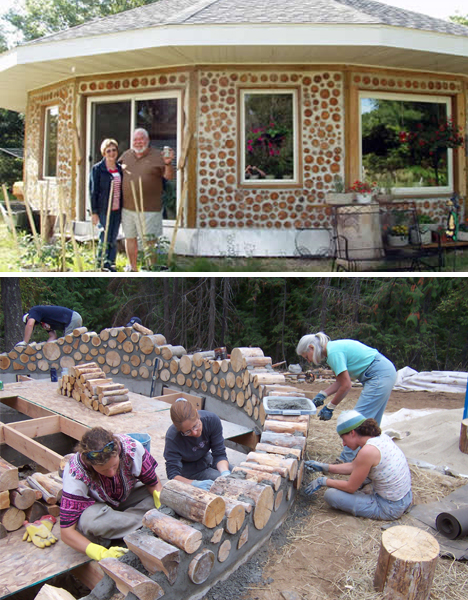
(images via: daycreek, cordwood masonry)
[youtube=KByX6XLTLy8]
From far away, it looks like stone masonry – but get up close and you’ll see that cordwood buildings are actually made from wood stacked firewood-style, and mortar. Debarked logs ranging from 12 to 36 inches can be arranged into walls either in load-bearing round structures or in combination with post-and-beam framing. Soft woods like cedar and pine are used because they are more stable, with less expansion and contraction. These walls offer both insulation and thermal mass. As with any natural building technique, it’s labor-intensive, but easy enough that practically anyone can do it.
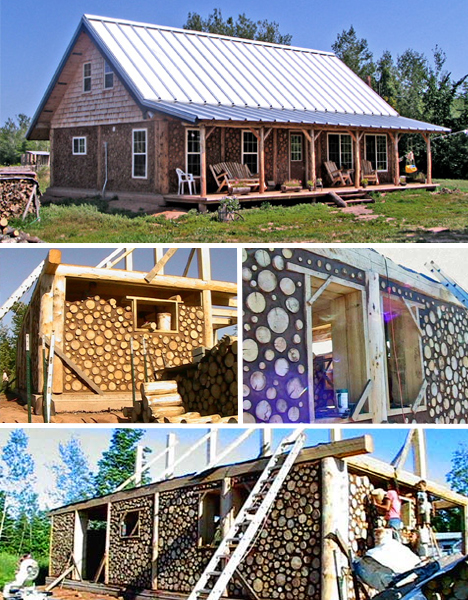
(images via: home-n-stead)
While the mortar typically used for cordwood construction is made from Portland cement, lime and water, some people are beginning to combine cordwood building with cob in place of mortar, as in the owner-built cordwood home above.
Straw Bale
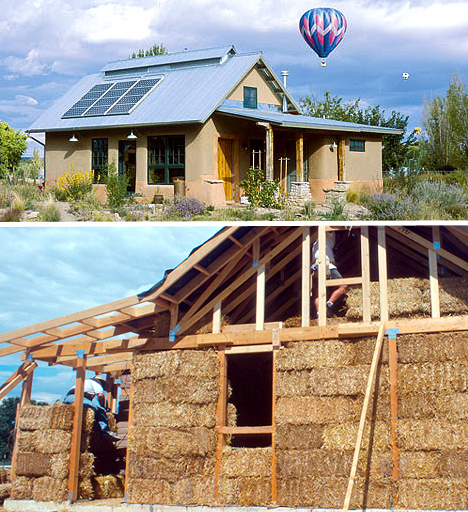
(images via: building with awareness)
[youtube=RjNhJqnva3w]
“I’ll huff and I’ll puff and I’ll blow your house down!” It seems like straw would be the worst possible material to depend upon for stable shelter, but in fact, straw bale building produces thick walls with excellent insulative qualities and surprising strength. As with cordwood and cob, straw bale walls can be load-bearing or can be combined with post and beam framework as needed to gain building permits.
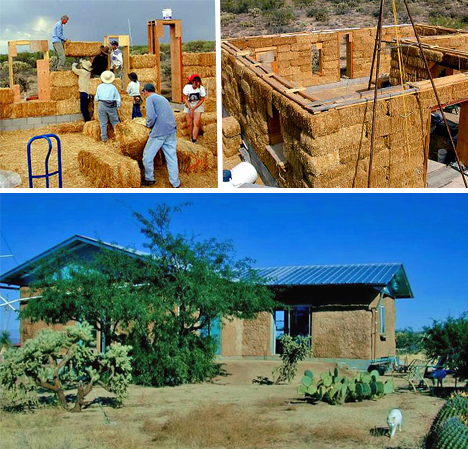
(images via: solarhaven.org)
The straw bales are stacked on top of a masonry foundation, anchored to each other with wood stakes or bamboo poles, and finished with a breathable earthen or lime stucco that allows the walls to breathe, preventing moisture accumulation in the straw. Straw bale structures have been found to be remarkably fire- and pest-resistant.
Rammed Earth
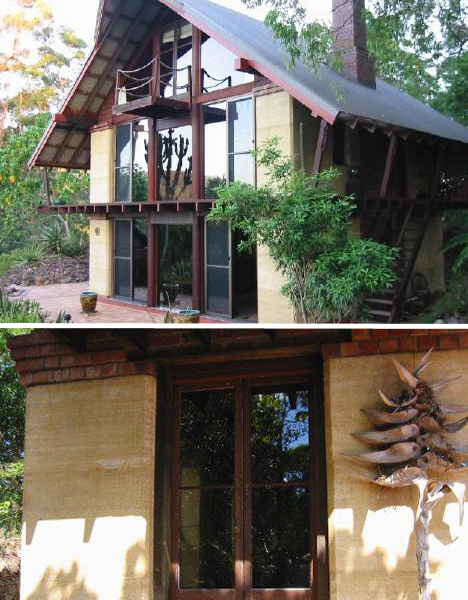
(images via: rogers rammed earth)
[youtube=KSQgAxbQWZ0]
Fireproof, termite-proof, storm resistant, extremely low-maintenance and literally dirt-cheap: all of these qualities make rammed earth an attractive natural DIY option for owner-builders. Popular in hot, dry places like Australia and the American Southwest, rammed earth uses compressed dirt blocks as building bricks. The dirt is often from the home site, typically packed into a wood wall former, and the results are stunning and well suited for modern home designs.
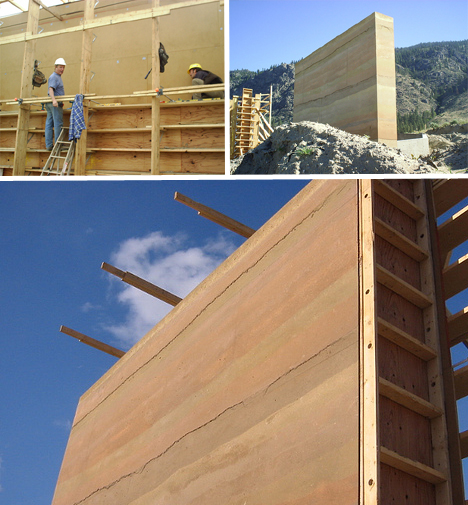
(images via: rammed earth)
While tamping of the earth into bricks can be made easier by a pneumatically-powered tamper, it’s entirely possible – and much cheaper – to get the job done manually. Rammed earth buildings last indefinitely and results in energy-efficient buildings that keep temperature fluctuations to a minimum.
Earthbag Building
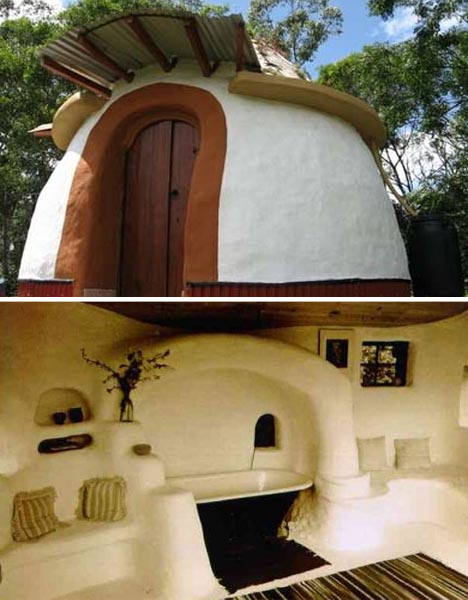
(images via: dornob)
[youtube=bFv3Zbwsjtg]
Imagine building with earth that you get for free from your own land, but without the intensive labor required to mix cob or compact bricks. Earthbag building has an extremely low learning curve and uses mostly waste materials. Woven polypropylene feedbags (often factory misprints) are filled with dampened soil and compacted from above with manual tampers. They’re held in place by two stands of barbed wire and can be filled in place, eliminating heavy lifting.
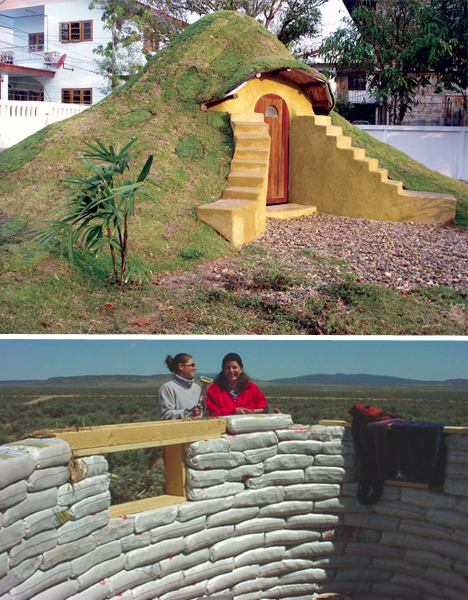
(images via: mother earth news, tiny house design)
Earthbags can be an ideal alternative to cob in areas where the soil has a low percentage of clay, and they also make it easy to construct domes and other rounded structures. Earthbag buildings can be bermed with earth to create an “underground” structure that looks like a seamless part of the landscape.







